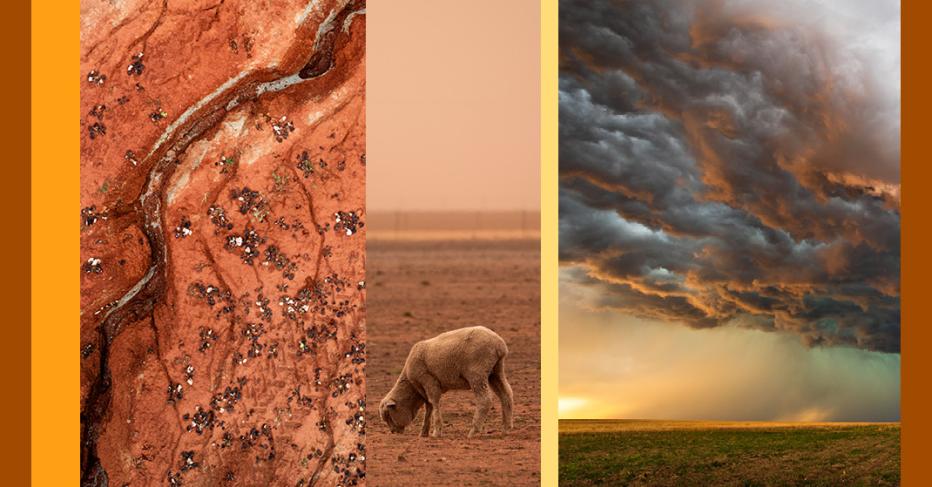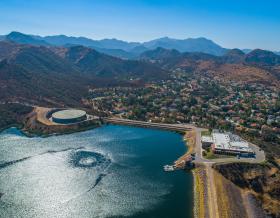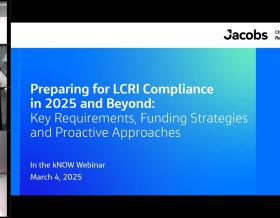
Overview
Last year, the Intergovernmental Panel on Climate Change (IPCC) started releasing its Sixth Assessment Report (AR6), beginning with the report from Working Group I on the Physical science basis for climate change. We published a summary of the key points here. It recently released the report from Working Group II (WGII) which focuses on impacts, adaptation and vulnerability.
The report summarizes the current scientific understanding of observed climate change impacts on natural and human systems and the vulnerability of those systems to projected climate change impacts. It also outlines existing adaptations to observed and projected climate change and comments on the feasibility of and limits to adaptations.
Jacobs Global Technology Leader Resilience and Climate Change Craig Clifton and Senior Resilience and Climate Change Technologies Tapash Das have again looked at the report’s key findings.
Download the PDF document or continue reading below.
Human influence on the climate system: A quick recap from the Working Group I report
Climate Change 2021: The physical science basis affirmed that human influence on the climate system was an established fact and was driven mainly by carbon dioxide, methane and nitrous oxide emissions from human activities.
It found that increased concentrations of greenhouse gases (GHGs) in the atmosphere had contributed to warming of the air, land and oceans, changes in precipitation patterns, retreat of glaciers and Arctic Sea ice, sea level rise and the amplification of many weather and climate extremes. It found that some system changes, particularly those driving sea level rise, are now effectively irreversible at human timescales.
Global warming of at least 1.5°C (compared with 1.1°C currently) is likely by 2040 under even the most ambitious GHG emissions scenario considered by the IPCC for climate change modelling in AR6.
Observed impacts of climate change
Climate Change 2022: Impacts, adaptation and vulnerability reports that even with only the current level of warming, climate change impacts on ecosystems, people, settlements, infrastructure and water and food production systems are already pervasive. These impacts have mainly resulted from increases in the frequency and intensity of hot temperature extremes on land and in the oceans, heavy precipitation, drought and fire weather.
Changes in natural systems that can be confidently attributed to climate change have been observed in almost every region on Earth. Several species extinctions have been attributed to the effects of climate change. Local species losses and mass mortality events on land and in ocean have been driven by heat extremes, some of which have been more severe than were projected for 2100. Some 50% of the species assessed globally have shifted further towards the North or South Pole or to higher elevation.
The amplification of weather and climate events by climate change has exposed millions of people to acute food insecurity and reduced water security—climate change influences have contributed to roughly half of the world’s population experiencing severe water scarcity for at least some part of the year. Sudden losses in food production and access to food caused by climate events and compounded by decreased diet diversity have increased malnutrition in many vulnerable groups. Food and water insecurity, extreme heat, flooding, wildfires and food or water-borne diseases linked to climate change have also adversely affected the physical and mental health of people where these impacts have been assessed. Climate change is contributing to humanitarian crises where climate hazards interact with high social vulnerability.
Looking to the future: Risk and vulnerability to projected climate change
Beyond 2040, climate change is projected to lead to numerous risks to natural and human systems. For all types of risk considered by WGII, assessed mid and long-term impacts (those experienced by 2050 and 2090, respectively) are up to multiple times higher than currently observed. Projected adverse impacts and related losses and damages escalate with every increment of global warming. These impacts will be strongly influenced by near-term mitigation (by 2040) and adaptation actions.
Extinction risk increases disproportionately from global warming of 1.5 to 3°C and is especially high for species with restricted distributions and/or specialized habitat requirements, as well as for species rendered less resilient by human-induced non-climate stressors (e.g., pollution, pest plants and animals, habitat fragmentation, water resource extraction.)
The ability of natural ecosystems to provide carbon storage and sequestration services is projected to be increasingly impacted by heat, wildfire, droughts, loss and degradation of vegetation from land uses. The flow of water in many of the world’s major watersheds is projected to be detrimentally affected by climate change, with water quality in some of these also degraded by wildfires.
Water scarcity and water-related hazards will continue to increase in all assessed regions, with greater risk at higher global warming levels. Global glacier mass loss is projected to diminish water availability for agriculture, hydropower and human settlements in the mid- to long-term, with these changes projected to double if we reach 4°C warming.
Without adaptation, projected increases in direct flood damages will be up to two times higher at 2°C and up to four times higher at 3°C compared to 1.5°C global warming. At global warming of 4°C, approximately 10% of the global land area is projected to face increases in both extreme high and low river flows in the same location.
Climate change risks to cities, settlements and key infrastructure will rise rapidly with further global warming. Between 3.3 and 3.6 billion people live in areas that are highly vulnerable to climate change. Approximately 1 billion people living in low-lying cities and settlements will be at risk from coastal-specific climate hazards in the mid-term under all scenarios without effective adaptation. The population exposed to coastal flooding will rise by around 20% if sea levels rise 0.15m above 2020 levels and will double at 0.75m sea level rise and triple at 1.4m. Globally, over $10 trillion in asset value could be exposed to coastal flooding by the end of this century.
Climate change will increasingly add pressure on terrestrial food production systems with every increment of warming. Some of the current global crop and livestock areas will become climatically unsuitable, with the issue particularly exacerbated in many areas close to the equator. Indigenous and other already vulnerable groups are likely to be disproportionately affected by climate change.
Globally, urban infrastructure systems are increasingly vulnerable to climate change impacts and risks, particularly in locations experiencing unplanned rapid urbanization. Climate-related transport and energy infrastructure damages are projected to be a significant financial burden for many countries, with cascading impacts across economies and societies.
Adaptation and climate resilient development
Adaptation is the planned and/or unplanned (or autonomous) process of adjustment to actual or expected climate change and may occur in both human and natural systems.
Approximately 60% of all adaptation responses documented since 2014 respond to water-related hazards like droughts, floods and rainfall variability. Due to the pervasiveness of current and projected impacts of climate change on water, the IPCC considers that water will be critical to future climate resilient development.
There is significant scope for successful adaptation to climate change in most human systems and many natural systems. However, even effective adaptation does not prevent all losses and damage. The effectiveness of adaptive responses declines and the projected risk increases with increased warming. Many natural systems are already at or near “hard” limits to their natural adaptation capacity.
Enabling conditions are key for implementing, accelerating and sustaining adaptation in human and natural systems. These include political commitment and follow-through, institutional frameworks, policies and instruments with clear goals and priorities, enhanced knowledge of impacts and solutions, mobilization of and access to adequate financial resources, monitoring and evaluation, and inclusive governance processes. Equitable outcomes contribute to multiple benefits for health and well-being and ecosystem services, including for indigenous peoples, marginalized and vulnerable communities.
The need for climate response
WGII's contribution the IPCC’s Sixth Assessment Report notes the profound impacts that are already being experienced by many human and natural systems as a result of climate change. It provides a timely warning of the urgent need for climate resilient development that combines mitigation of greenhouse gas emissions and adaptation to climate change, with effective responses to other drivers of vulnerability in human and natural systems.
The Summary for Policymakers produced by WGII concludes by noting:
“The cumulative scientific evidence is unequivocal: climate change is a threat to human well-being and planetary health. Any further delay in concerted anticipatory global action on adaptation and mitigation will miss a brief and rapidly closing window of opportunity to secure a liveable and sustainable future for all.”
How can Jacobs help clients?
Jacobs offers an unparalleled breadth of climate change services. We’ve been working across the built environment, water, energy and transport lifecycle for over 75 years and understand the complexities of the climate change challenge on the ground. From strategy through to implementation, our global team of advisors and technicians can work with local teams to help cities, infrastructure providers, utilities and communities respond to climate change through energy system transition, decarbonization, adaptation and resilience, and improved environmental stewardship.
Explore the full report here:
https://www.ipcc.ch/report/sixth-assessment-report-working-group-ii/












































